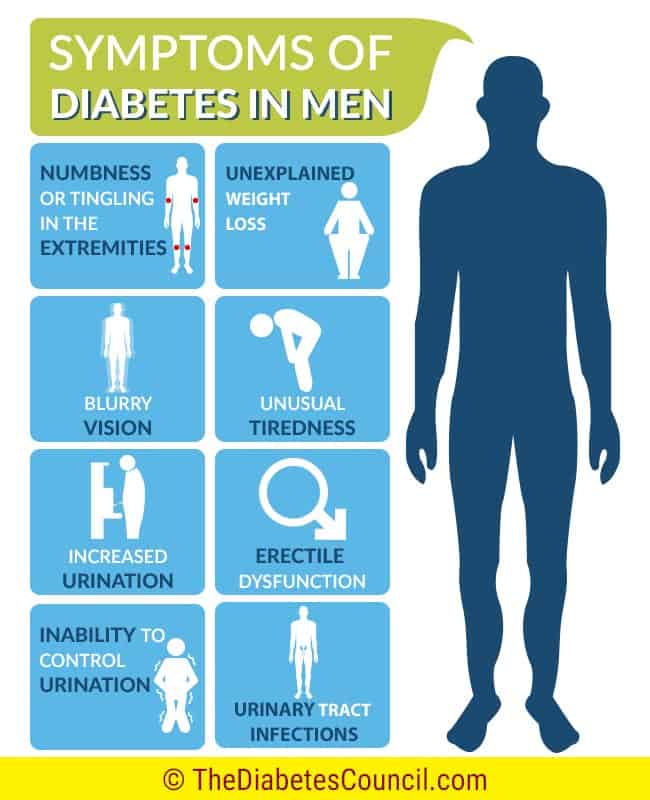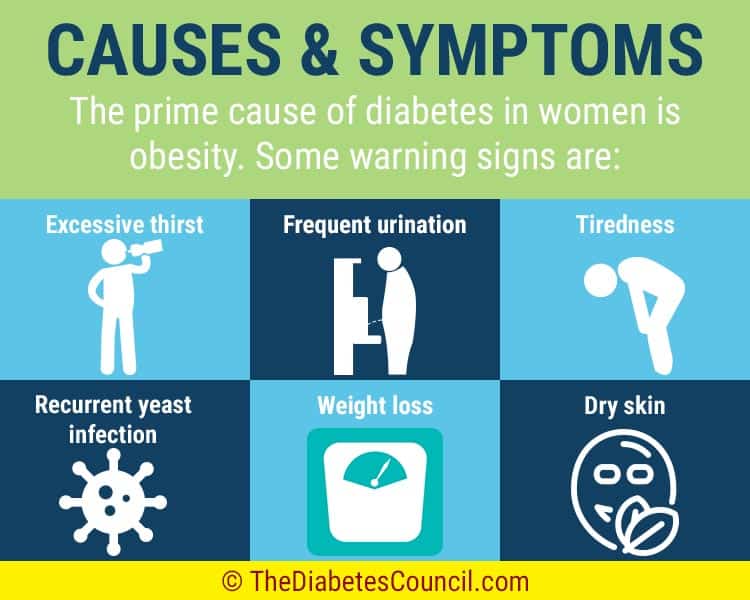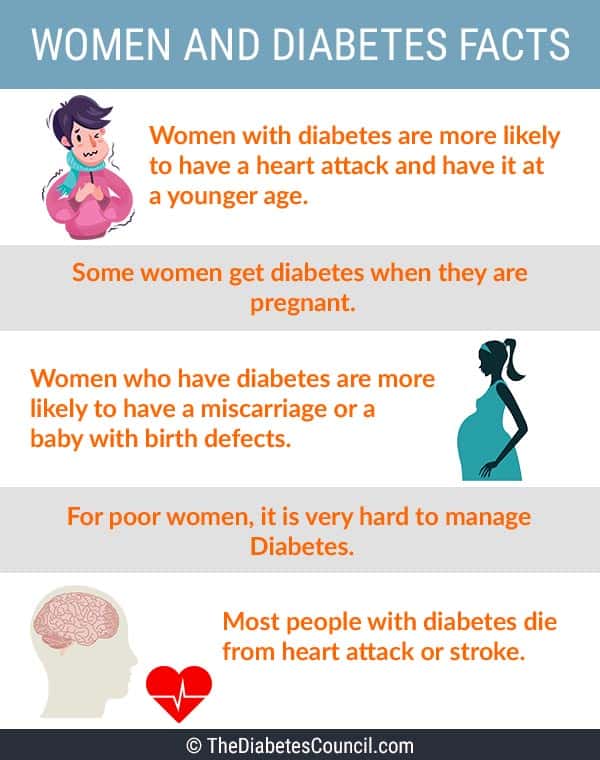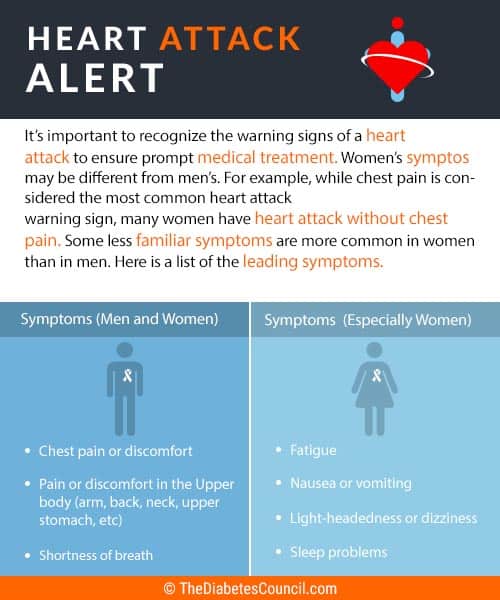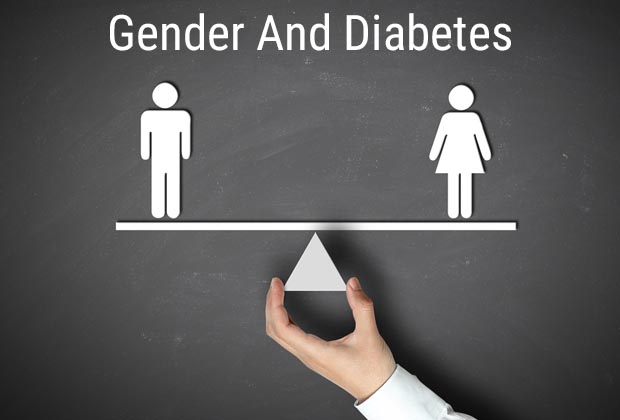
In a recently published study, it was revealed that while death rates fell for men between the years 1971 to 2000 with diabetes, the rates for women with diabetes did not fluctuate. Men with diabetes live 7.5 years less than other men who do not have diabetes. This number increases to 8.2 years among women who have diabetes to those who do not.1 However, in a very different study, researchers at the University of Glasgow revealed that men are biologically more susceptible to getting diagnosed with type 2 diabetes than women.2
What do these studies mean? How can a male or a female prevent themselves from being diagnosed with Type 2 diabetes? If you already have Type 2 diabetes, what can be learned from these studies in order to have a good diabetes management? Also, how does diabetes affect male versus female?
In this article, we will look at some of the most prominent studies conducted in this area and ways of preventing/managing for an efficient diabetes management based on one's gender.
The earlier mentioned research from University of Glasgow indicates that men do not need to gain more weight than women to be diagnosed with Type 2 diabetes. This means that women have to gain considerable weight and fat, compared to males, in order to have fat deposits that are linked with diabetes. While women store most of their fat in the thigh and hip area, men tend to store their fat mostly in the waist and in their liver. The results of this research were drawn from 51, 920 men and 43, 173 women in Scotland. The BMI for a diagnosis in diabetes in men was 31.83 compared to 33.69 in women.
We are now aware of several factors that are at play for the increase in chances of getting Type 2 diabetes:
- lifestyle
- age
- ethnicity
- body weight
- obesity
- socioeconomic status.
This study confirms that gender is also one of the prominent factors. According to this study's lead study author Naveed Sattar, MD, PhD, he states that the previous studies which indicated that men older than 40 years old were at higher risk of developing diabetes could be explained because of the following reason: men have to gain less weight than women to develop the diabetes.
In order words, men are at greater risk of getting Type 2 diabetes because they store fat in their organs compared to women who store fat mostly on the surface layer. Research reveals that women have more fat which is found under the skin than men do therefore the hypothesis that women need to amass more fat than men to develop harmful fat deposits is what makes developing diabetes at a greater risk for men.3 However, while more men are being diagnosed with Type 2 diabetes, women with diabetes have it worse than their male counterparts.
Diabetes in Men and Women
While there are the classic early symptoms associated with diabetes such as:
- excessive thirst
- frequent urination
- major hunger pangs
- fatigue
- blurry vision
- cuts that won’t heal
There exist diabetes related symptoms that are specific only to men and women. While some of the symptoms below may occur with age in those without diabetes, people with diabetes have an increased chance of onset and early severity of these symptoms due to their diabetes.
The major symptoms in men who have diabetes are erectile dysfunction, retrograde ejaculation and urological issues. The National Diabetes Information Clearinghouse states that 20 to 75 percent of men with diabetes are at risk of or have erectile dysfunction. This could be due to the damage caused to the Automatic Nervous System, which is responsible for the widening and constricting of one’s blood vessels. Retrograde ejaculation is when some or all of a man’s semen goes into the bladder instead of the tip of coming through the penis during ejaculation. Those who experience this symptom may notice little or no semen during ejaculation. Poor management of diabetes and the result of nerve damage can cause retrograde ejaculation.
Urological problems in men occur due to damage to the nerves that control their bladder functions. According to the National Institute of Diabetes and Digestive and Kidney Diseases, more than half of men and women with diabetes have some sort of bladder dysfunction due to diabetes. If you find yourself needing to use the washroom frequently, if there is pain and or a burning in the bladder during urination, if your urine is of cloudy or reddish color, and if you have a fullness in the rectum, you may consider seeing your doctor for tests that might determine if you have Type 2 diabetes. 4
Women may experience more or less of the same symptoms as men, however, there are several that are unique to the female body. Unfortunately, because of a women’s physical make up, diabetes affects them differently due to hormones, menopause and other various reasons. For women, the added burden of hormonal fluctuation related to the menstrual cycle, pregnancy, and menopause makes it more difficult to maintain proper blood glucose levels. Symptoms may include vaginal/oral yeast infections, urinary infections, female sexual dysfunction, Polycystic Ovary Syndrome.
According to the American Diabetes Association, glucose triggers the growth of yeast within a body. 5 This is the reason for why women with diabetes are at increased risk of getting vaginal yeast infections. Many women with Type 2 Diabetes already have heart disease at the time of their diagnosis. Heart disease is the number one reason for mortality in women with diabetes. 6 Lack of sexual interest or libido, pain and discomfort during sexual intercourse and decreased vaginal lubrication are other more symptoms of diabetes in women.
I advise reading the following:
Polycystic Ovarian Syndrome is the common cause of infertility in women. Women who have PCOS have immature follicles in their ovaries that form large cysts or lumps. While the egg does mature within the follicles, the follicles do not break open in order to release the egg. Due to PCOS, women do not get their period, or if they do, they get them infrequently. In the US, 5-10 perfect of women have PCOS. If you experience the following signs or symptoms, please see your doctor asap for a diagnosis: occasional menstrual cycles or no periods, painful periods, infertility, acne, facial hair, dark patches of skin in neck folds, armpits and other effected areas.7
Complications in women
Due to the increase in stress and anxiety related to diabetes, the desire for sex decreases for both men and women. The changes in a woman’s body due to menstrual periods or hormone changes can lead to feeling tired and irritated. If you take birth control, please discuss your options with your doctor. Birth control may also regulate heavy and painful periods which in turn can make it easier to manage your diabetes. Hormone replace therapy is an option for women close to their menopause. It is important to educate yourself with the symptoms of menopause and diabetes as some woman mistake symptoms of menopause to be that of diabetes.8
A Finnish study states that heart attacks are more fatal for women with diabetes than for men with diabetes. This is because of the symptoms of a heart exhibited in a woman is a little different for woman than for a man. While the most common warning of a heart attack is chest pain or discomfort in the upper body, women also experience nausea, shortness of breath and back pain more than a man does.9
Depression is another theme that is twice as common in women as in men. We all know that stress is one of the contributing factors to increasing diabetes complications; therefore it has a greater toll on women than on men. A study in 2006 in Journal Public health found that diabetes and depression are most likely associated in women but not as much as in men. 10 Women also develop eating disorders if they have diabetes.
According to the ADA, bulimia is the most common eating disorder that is present in women with Type 1 diabetes and binge eating amongst those with Type 2 diabetes. 11
What are my risks?
What are my risks of getting diabetes? What aspects of my lifestyle and health can increase my risk of experiencing complications from diabetes? Some of the risks factors are common for both men and women: family history of diabetes, genes that increase the risk of diabetes, family’s ethnical background. However, we have listed the most common specific risk factors for men and women below. 12
Risk factors in Men:
- Smoking habits
- Being overweight or obese
- Sedentary lifestyle or lack of physical activity
- High blood pressure
- High cholesterol
- Being older than 40
- Unhealthy diet
Risk factors in Women:
- Women who are older than 45
- Being overweight or obese
- History of diabetes in family
- Given birth to a baby weighing more than 9 pounds
- Had gestational diabetes during pregnancy
- High blood pressure and cholesterol
- Sedentary lifestyle or lack of Physical activity
- A history of past polycystic ovary syndrome
Treating diabetes in Men and Women
Despite all the complications that come with the diagnosis of diabetes, they can be further minimized and the severity can be harnessed through diabetes management. A well-managed diabetes, healthy and active lifestyle, proper medications, one can prevent or manage their diabetes. It is imperative that people with diabetes are proactive about their health and its management. If you still haven’t, book an appointment with your doctor to get a blood test, especially if you are experience any of the symptoms mentioned previously.
Additional links:
Lifestyle changes include:
- Physical activity, which means getting off the couch into the gym or the field
- Nutrition is the cut down on any food groups that affect your blood sugar
- Getting regular checkups to avoid unwanted complications that could have been prevented by a visit to the doctor
- Stress management is key to keeping your blood sugar levels at desired level. Anxiety is not a friend of diabetes
- Keeping away from alcohol if you can. If not, keep it at a minimum of no more than one drink a day
- Avoiding smoking
- Monitoring your blood sugar several times a day
Medications:
The management of symptoms and complications of diabetes is further minimized with medications. Some of the types of medications include:
- Insulin therapy
- Metformin reduces blood sugar
- Sulfonylureas like Chlorpropamide increases pancreatic insulin secretion
- Meglitinides stimulates the pancreas to release more insulin
Before trying any new treatment and/or medications, please ensure to consult with your doctor due to the interference they may have with current treatments or medications. So we hope you learned something about the roles of gender in diabetes and give us a comment for any future suggestions down below.
TheDiabetesCouncil Article | Reviewed by Dr. Christine Traxler MD on May 26, 2020
References
- http://www.diabetesincontrol.com/men-develop-diabetes-with-less-weight-gain-than-women/
- http://www.healthline.com/health/recognizing-diabetes-symptoms-men#Overview1
- http://www.healthline.com/health/diabetes/symptoms-in-women#Complications6
- https://www.niddk.nih.gov/health-information/diabetes/preventing-diabetes-problems/sexual-urologic-problems
- http://www.diabetes.org/living-with-diabetes/treatment-and-care/women/women-and-diabetes-frequently-asked-questions-faqwomen-and-diabetes.html
- http://www.medicalnewstoday.com/articles/310780.php#risk_factors_for_diabetes
- http://www.diabetes.org/living-with-diabetes/treatment-and-care/women/polycystic-ovarian-syndrome.html
- http://www.diabetes.org/living-with-diabetes/treatment-and-care/women/sexual-health.html
- http://care.diabetesjournals.org/content/28/12/2901
- http://www.diabetesforecast.org/2011/oct/how-diabetes-differs-for-men-and-women.html
- http://www.diabetes.org/living-with-diabetes/treatment-and-care/women/eating-disorders.html
- https://www.niddk.nih.gov/health-information/health-communication-programs/ndep/am-i-at-risk/diabetes-risk-factors/Pages/diabetesriskfactors.aspx


